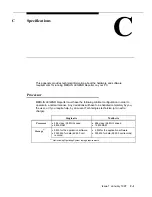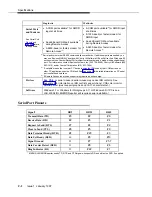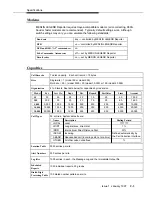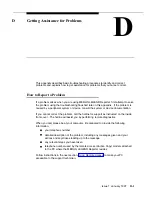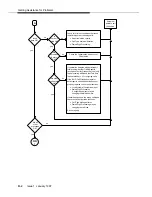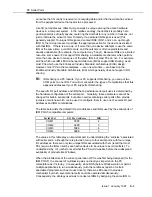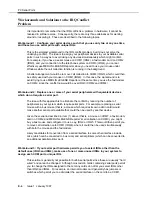
PC Serial Ports
Issue 1 January 1997
E-5
Serial Ports Under Windows
Unlike the DOS-only world of yesterday, today’s multitasking environments like Windows
permit the microprocessor to communicate with up to four active serial port devices at
the same time (COM1 through COM4). For example, under Windows, if you are using a
serial mouse (on COM1) within a terminal emulator program which operates a data
modem (on COM2), while using a fax board (on COM3) to transmit or receive a fax “in
the background,” you are using three serial port devices simultaneously. You might even
wish to make a phone call using MERLIN LEGEND Reporter (on COM4) at the same
time, bringing the total up to four simultaneously active serial port devices.
The fact that Windows permits this kind of powerful multitasking does not guarantee that
the underlying PC hardware can support this level of operation, at least without some
customizing at the hardware level. Since some PCs can support it by default (for
example, those which support IRQ sharing), Windows doesn’t prohibit you from
configuring your system and attempting tasks like the one in the previous paragraph.
Unfortunately, most PCs cannot support this operation by default, and the most likely
result of attempting the above scenario is “hanging” the PC due to an IRQ conflict. On
such systems, using COM1 along with COM2 is generally fine (recall that these devices
have unique IRQs by default), but the addition of COM3 or COM4 causes the system to
fail.
Fortunately, Windows permits complete customization of all parameters involving serial
ports through the Control Panel, including configuring nonstandard I/O port addresses
and IRQs (that is, values different from those in the table—these parameters can be
viewed and/or modified by selecting the desired port in the Control Panel’s “Ports” icon,
selecting the “Settings...” button, then selecting the “Advanced...” button). This flexibility
offers the opportunity of salvation for owners of PCs which do not support IRQ sharing
who require the use of three or more COM ports simultaneously.



